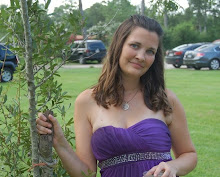Some of you have seen some of my free motion quilting and have asked me to show you how. Its actually very easy to do.
Some supplies that you need.
Thread: Try to use the same type of tread in top and bottom, this will help prevent tension problems. You can use several different types of threads. I will be using silk in this tutorial.

Free Motion Quilting Foot: These vary by machine

Sewing Machine: Must be able to drop the feed dogs.

Gloves: I use Machingers
Extension table: not required but very handy when FMQ

Quilt Sandwich: This is to practice on. I always have a few of these ready so that way I can check my tension and practice a bit before starting on my actual project. Take two pieces of fabric 12x12 is fine and a 12x12 piece of batting. Put them together with the batting in the center. Much like you would an actual quilt. You don't need to pin it because it is a small enough piece it wont matter but make sure you always baste your actual quilt.

First decide on a design. You can draw a few on scratch paper before you get ready to sew. Its actually easier for me to just practice with my sewing machine but some people prefer to do this to get a design in their head first.

When starting (be sure to drop your feed dogs) be sure to pull your bobbin thread to the top. To do this just drop down your needle while holding the tail of your top thread. Then pull the needle back up. Your bottom thread should come up when you do this. Take it and pull it to the side so that it is out of your way when you sew. If you skip this step you may get a big mess on the bottom side of your quilt. Be sure to follow the tie off directions at the end of the tutorial and tuck all loose ends when you are finished.

Take a couple stitches in place and begin sewing. Use your gloves for better grip on your quilt. Here is a video. (Don’t mind my daughter singing in the background).
Finally when you are finished make sure you don't cut your threads too short. Leave enough so you can tie them and hide the ends. You can take a couple stitches in place when you are done, then pull the bobbin thread to the top (same way I explained earlier). Make sure there is a knot in the threads. (when you took the extra stitches a small knot should have formed, you can tie one if not).

Then thread the ends into a needle and hide the threads like so…trimming the ends.

And you are done.

Also a little tip on tension. Sometimes you have to practice with your machine a bit to get it just right. That's why I suggest using a practice piece each time before actually sewing on your actual quilt. Practice for a bit adjusting just a little at a time. It can make a big difference so start with little adjustments until you get the desired tension. Write this down for future reference and its usually pretty accurate.
***Upper thread is too tight: If the bobbin thread can be seen on the surface. Lower the tension (-).
***Upper thread too loose: If the upper thread can be seen on the bottom of the quilt. Raise the tension. (+)
I hope this helps some of you. Let me know if there is anything I can change in order to make the tutorial a little easier to follow. Thanks!!

















































